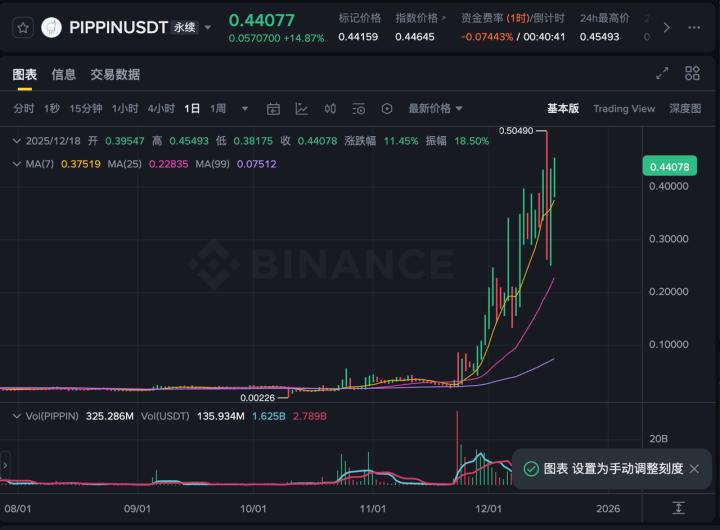Author: TechFlow

If new players are still entering the industry, Airdrop is likely to be their first stop.
From pure wool-pulling to complex interactions between project teams and users, Airdrops have gradually become both loved and hated.
For users, the love comes from successful Airdrops bringing huge returns, but the hate stems from complex rules, tedious tasks, and even opaque allocation mechanisms;
For projects, the love is that Airdrops can still bring short-term traffic and attention, but the decline in volume-inflating behaviors and community trust is also causing headaches.
People change.
After experiencing multiple bull and bear market cycles, crypto market users still expect "free lunches" but have become more rational in their behavior. Project teams are gradually realizing that simple Airdrops can no longer meet community building needs, and are trying more complex and transparent allocation mechanisms.
For example, Hyperliquid's Airdrop was highly praised for rewarding early users, while Redstone's Airdrop sparked strong community opposition due to last-minute changes in allocation proportions.
It's 2025, can Airdrops still play their role?
Recently, Binance Research Institute released a report titled "Where Are Our Airdrops Going?", providing us with an in-depth perspective by analyzing the current state, problems, and improvement directions of Airdrops, potentially finding better solutions for project teams and users.
TechFlow has organized and summarized the core content of the report, with the following key points.
Key Points
Although Airdrop models still have many shortcomings, their position in the industry cannot be ignored.
Two popular Airdrop classifications:
Retroactive Airdrops: Mainly rewarding existing users, distributing tokens based on their historical behavior, aimed at enhancing community loyalty.
Engagement Airdrops: Attracting new users and increasing project exposure by pre-notifying users and setting task incentives. More suitable for early-stage projects to capture market share and establish initial user groups.
Points that need improvement:
Clear allocation rules and standards help reduce user dissatisfaction and misunderstandings.
Project teams need to listen more to the community's voice.
Avoid excessive resource allocation to internal teams or large holders to prevent harming ordinary users' interests.
The introduction of on-chain monitoring tools and "human identity verification" technology may reduce Airdrop volume-inflating behaviors, making Airdrops fairer and more efficient.
Through these key points, the report provides a clear framework to help us understand the current state of Airdrops and their potential future development directions.
Overrepresentation of Insiders and KOLs in Distribution
Many projects allocate a larger proportion of Tokens to teams, investors, and venture capital (VC) firms, leaving a small percentage for the community. For example, KAITO allocated 43.3% of Tokens to teams and investors in its February 2025 Airdrop, with only 10% distributed to the community, sparking public debate on X platform.
Some projects allocate a large number of Tokens to influencers, who may choose to sell immediately, diluting Token value and harming genuine users' interests. KAITO was reportedly controversial for allocating substantial Tokens to influencers who sold Tokens shortly after the Token Generation Event (TGE), impacting Token prices and undermining community trust.
Lessons Learned
Distribution Ratio Requires Careful Consideration: Draw experiences from Token distribution results of similar scale or nature projects, and pay attention to market reactions to distribution plans.
Implement Vesting Periods and Lockup Mechanisms: Applying vesting periods and Token lockups for insiders and influencers can reduce selling pressure in the early TGE period and better align their interests with the project's long-term goals.
Technical Barriers in Claiming Process
Complex or vulnerable claiming processes can hinder users from claiming Tokens, effectively reducing payment amounts and largely undermining the intended purpose of the Airdrop process.
For instance, Magic Eden's December 2024 Airdrop attempted to promote its mobile wallet application but reportedly generated user frustration on X platform due to bugs and unclear instructions.
Lessons Learned
Airdrop Claiming is an Important First Touchpoint for Many Potential Users. Ensure a smooth and convenient process to increase user retention possibilities.
How Can Airdrops Improve?
Increase Transparency
Set Clear Objectives: Project teams need to establish clear goals for Airdrops or Token incentive programs and ensure these goals align with the project's long-term vision.
Clearly Communicate Objectives: Through clear communication, align community behavior with project goals and vision, reducing dissatisfaction caused by inconsistent behavior weight allocation.
Enhance Community Engagement
Community is the Project's Core Competitiveness: Technology and products can iterate quickly, but community building requires time and patience. A project's long-term success depends on a solid and loyal community.
Balance Between Transparency and Participation: Transparency is fundamental, but not sufficient alone. Project teams need to involve the community more deeply in project development through interaction and feedback mechanisms, thereby enhancing sense of belonging and loyalty.
Challenges from User Liquidity: The open crypto industry reduces user switching costs, so projects must retain users through stronger community stickiness and sense of belonging.
Increase Monitoring Mechanisms
Some projects (like LayerZero) have collaborated with on-chain analysis companies (such as Nansen) to identify and cancel Airdrop eligibility for "Sybil attack" participants by analyzing on-chain data.
As technology advances, on-chain monitoring tools will become more sophisticated and widely used, making it easier for project teams to detect and exclude malicious behaviors.
"Proof-of-Humanity" tools are expected to help prevent Airdrop abuse in the future while protecting user anonymity and privacy. Such tools may become a key means of addressing Airdrop "gamification" issues.







